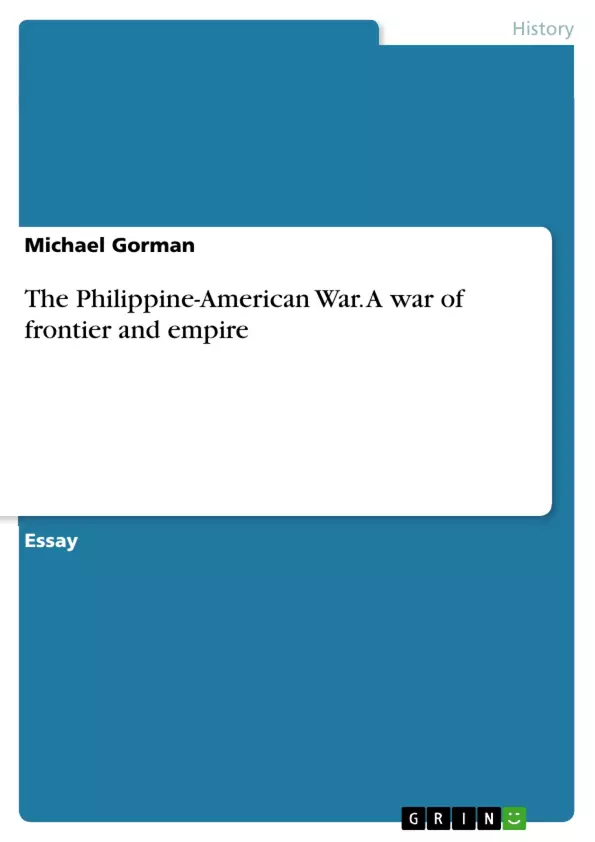This text discusses the Philippine – American War from 1899-1902 from its beginning to its direct outcome and repercussions.
Coming into the twentieth-century, after the closing of the frontier in 1890, the United States was looking to expand its influence into new frontiers and solidify itself as a significant player on the world stage. Until 1890, the United States had always had a frontier, a vast expanse of uninhabited, untamed, territory to expand into and conquer. Much like Spain which sought other ventures after the Reconquista of the Iberian Peninsula in 1492 (which lead to the discovery of the American continents), the United States and the American people were forced to look elsewhere in order to continue expanding and developing as a world power.
Inhaltsverzeichnis (Table of Contents)
- U.S. As A World Power
- The American People and the Frontier
- The United States and the Philippines
- The Spanish-American War
- The Philippine-American War
- American Attitudes Toward the Filipinos
Zielsetzung und Themenschwerpunkte (Objectives and Key Themes)
This text examines the Philippine-American War, a pivotal conflict that marked the United States’ emergence as a global power. It explores the motivations behind American expansionism, the complexities of the war itself, and the evolving attitudes of American soldiers towards the Filipino people.
- American Imperialism and Expansionism
- The Role of the Frontier in American Identity
- The Dynamics of Colonial Warfare
- Racial Prejudice and its Impact on Wartime Attitudes
- The Shifting Perceptions of the Filipino People
Zusammenfassung der Kapitel (Chapter Summaries)
- U.S. As A World Power: This section introduces the context of the Philippine-American War, highlighting the United States’ desire to expand its influence and become a global power after the closing of the frontier in 1890.
- The American People and the Frontier: This section explores the role of the frontier in shaping American identity and the need for new frontiers as westward expansion came to an end.
- The United States and the Philippines: This section examines the strategic importance of the Philippines for the United States, particularly in terms of its location for establishing a naval base and competing with European powers in Asia.
- The Spanish-American War: This section details the Spanish-American War, outlining the United States’ involvement in the Philippine Revolution and the subsequent transfer of power from Spain to the United States.
- The Philippine-American War: This section delves into the conflict between the United States and the Philippines, sparked by the Filipino people’s desire for independence after the Spanish-American War.
- American Attitudes Toward the Filipinos: This section explores the changing attitudes of American soldiers towards the Filipinos, highlighting the shift from initial sympathy to increased hostility and racism, as evidenced by personal accounts and letters from the war.
Schlüsselwörter (Keywords)
The key themes and concepts explored in this text include American imperialism, frontier expansion, colonial warfare, racial prejudice, and the changing perceptions of the Filipino people. It also examines the impact of the Philippine-American War on American national identity and the evolving role of the United States in the world.
- Citar trabajo
- Michael Gorman (Autor), 2013, The Philippine-American War. A war of frontier and empire, Múnich, GRIN Verlag, https://www.grin.com/document/333806



